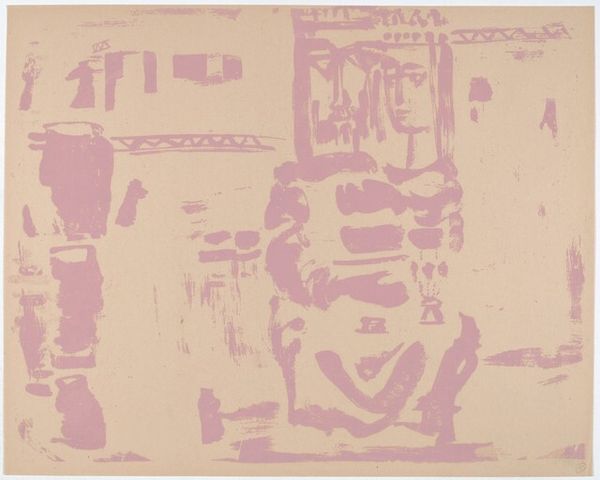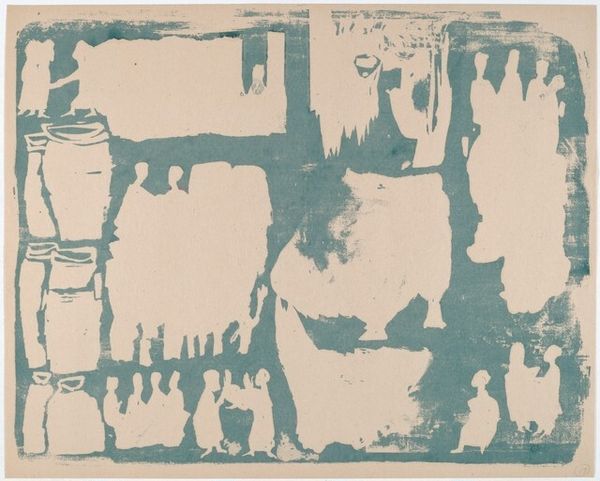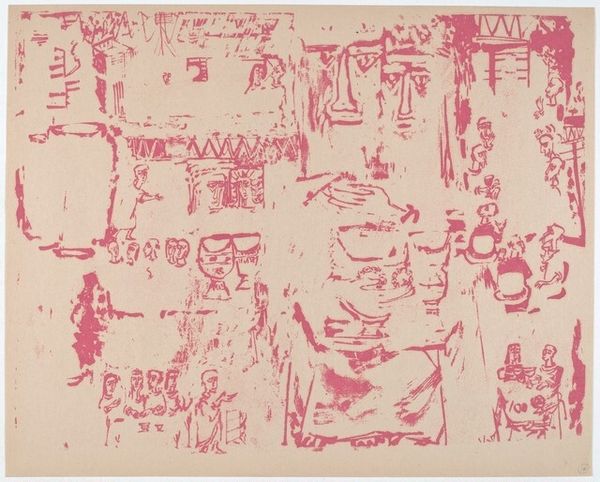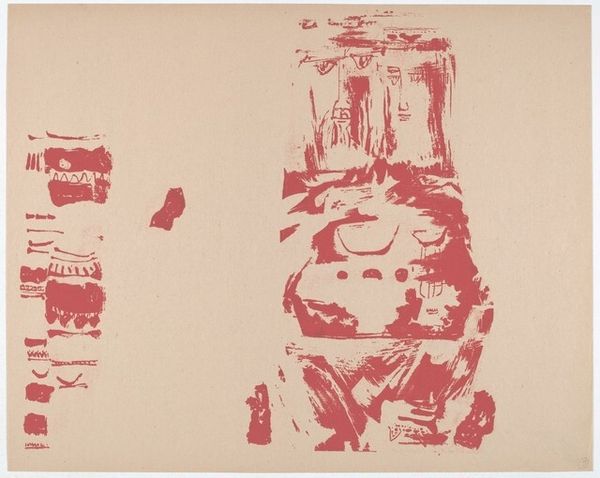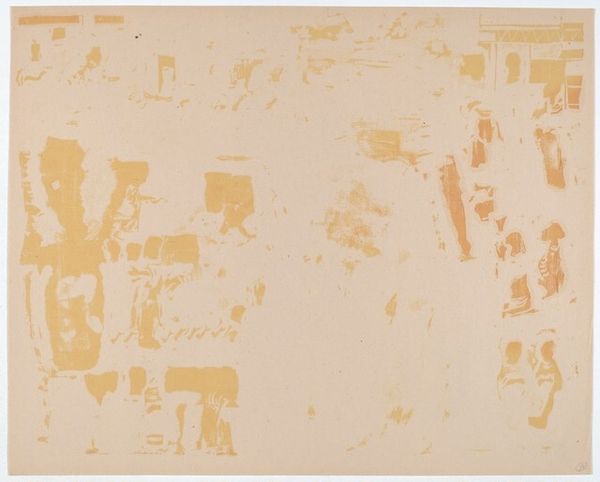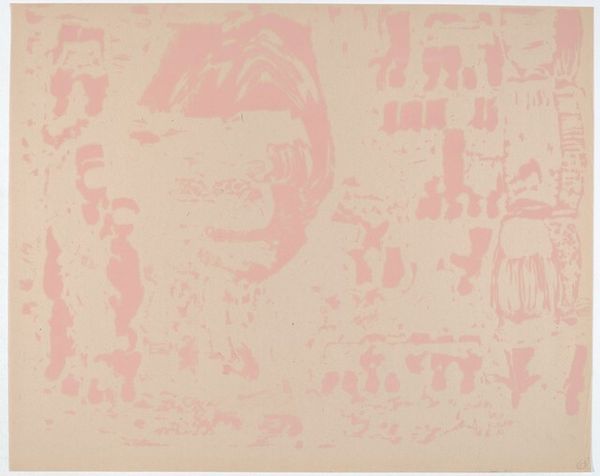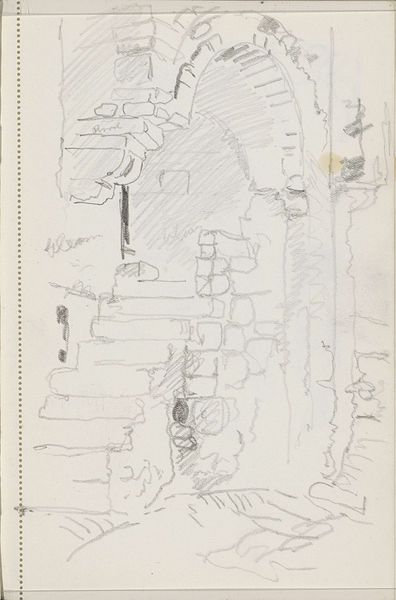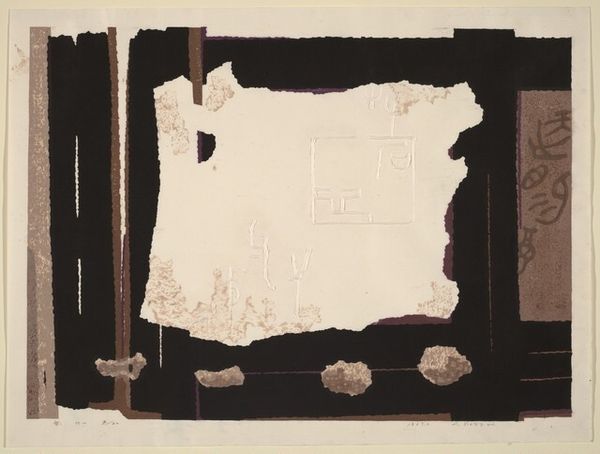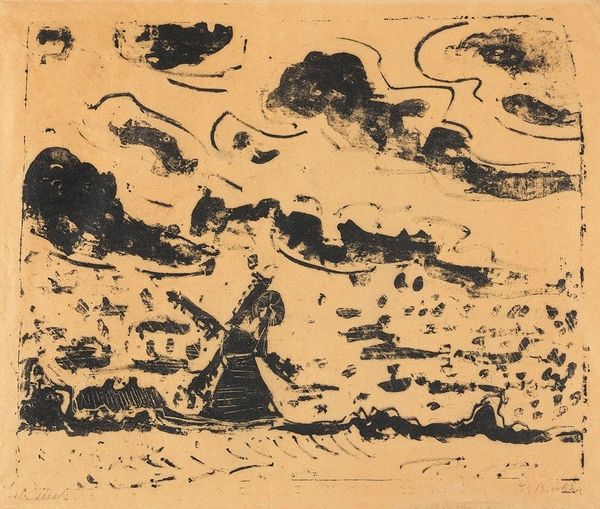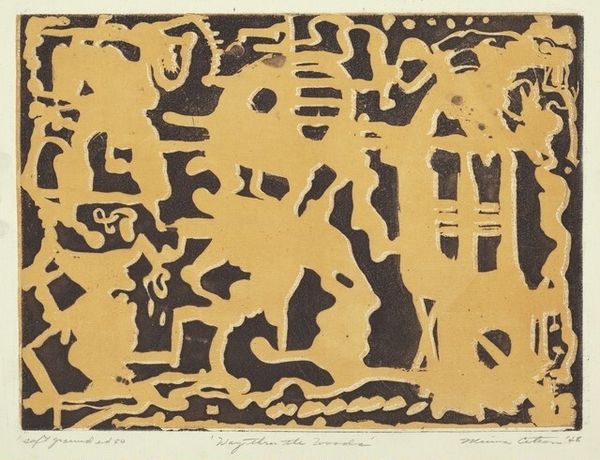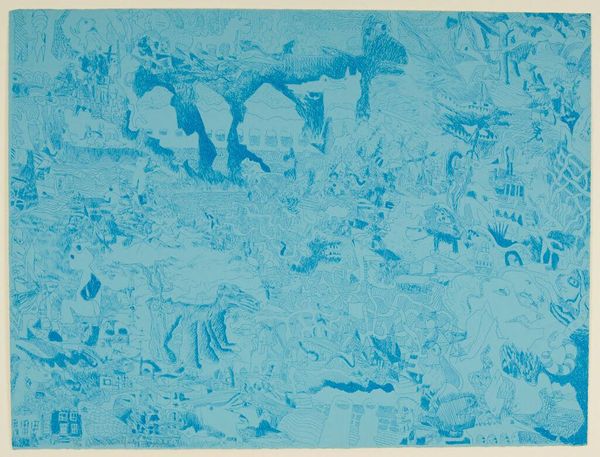
print, linocut, woodcut
#
abstract-expressionism
#
linocut
# print
#
linocut
#
figuration
#
linocut print
#
woodcut
#
abstraction
Copyright: National Gallery of Art: CC0 1.0
Editor: We’re looking at “The Beginning of Miracles: X,” a 1953 linocut print by Corita Kent. It's a work that seems to balance abstraction with recognizable forms. It feels both primitive and surprisingly sophisticated. How do you see this piece functioning within its historical context? Curator: It’s crucial to remember the sociopolitical landscape of the 1950s. Consider the prevalent Abstract Expressionism, largely dominated by male artists, and how Corita Kent, a Catholic nun, enters that space. The work certainly engages with abstraction, yet maintains a strong sense of figuration, alluding to religious narratives and social commentary. What might that combination suggest to you about her intentions? Editor: Maybe she’s subtly inserting her voice into a male-dominated field, using abstraction as a shield, while still communicating her beliefs and observations? The jagged shapes, though abstract, feel almost like coded messages. Curator: Precisely. And the medium of the print itself! Its accessibility meant wider dissemination and greater engagement with diverse audiences beyond the elite gallery system. How does that inform the politics of imagery for you? Editor: So, by choosing printmaking, she's democratizing the art, making her messages available to a broader public, regardless of their social standing? That feels like an act of defiance in itself! Curator: Indeed. The "miracle" in the title becomes less about divine intervention and more about everyday people experiencing and enacting social change through art. What does thinking about art’s public role teach us here? Editor: I guess it underscores the power of art as a vehicle for dialogue and social action, especially when artists find innovative ways to circumvent established norms. It reframes "miracle" from the religious to the revolutionary. Curator: Exactly. Understanding Kent’s historical context allows us to appreciate her work not just aesthetically, but also for its profound social implications. Editor: That’s given me a completely different lens to appreciate Kent’s art and consider how it breaks away from traditional contexts.
Comments
No comments
Be the first to comment and join the conversation on the ultimate creative platform.
